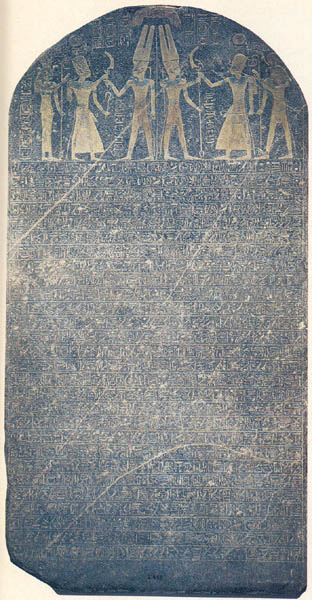Image Details

Jurgen Liepe
The earliest written mention of Israel is thought to be on the last two lines of the Merenptah stele (shown here), now in the Cairo Museum. Dating to 1207 B.C.E., the 7.5-foot-high black granite stele was commissioned by Pharaoh Merenptah (1212–1202 B.C.E.) (see photo of Pharaoh Merenptah) to commemorate several military victories, including a campaign in Canaan. The stele proclaims: “Ashkelon has been overcome. Gezer has been captured. Yano‘am was made non-existent. Israel is laid waste, (and) his seed is not.” The mention of Israel (see detail) appears slightly to the left of center in the second line from the bottom. Based on unpronounced signs in ancient Egyptian writing, the names Ashkelon, Gezer and Yano‘am are denoted as city-states, while Israel is refered to as a people not tied to a specific locale. Merenptah’s obituary for Israel, like reports of Mark Twain’s death, proved exaggerated.
Merenptah’s stele thus indicates that the people Israel were living in Canaan in the late 13th century B.C.E. This accords well with majority scholarly opinion, which dates the Exodus to sometime in the middle of the 13th century B.C.E.
